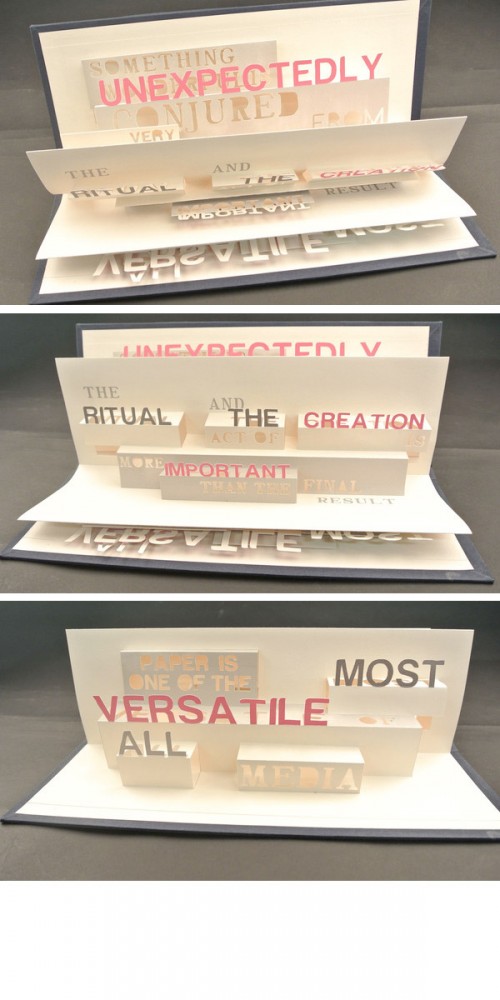Working on my daily collage…
Here’s the finished piece.
I love paper and my studio is filled with sheets of all sorts — patterned, colored, textured, plain, and lots of different weights. And there’s a big drawer full of sample books. I’m always looking for new paper sources and experimenting with the paper I have.
Hollie Chastain’s collage on a book cover. It’s 5×7-1/2. She says “This series is made from doodled faces and heads that I have clipped from old text books from the 50s and saved for years. I finally built up enough in my collection to then combine them with printed images from those same textbooks and tell a little story about each. ” See many more here
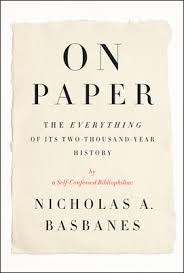 I recently read Nicholas Basbanes’ On Paper, a book chock-a-block with everything you ever wanted to know about paper and its history and uses. Each chapter covers a different aspect of paper: from the origins in China and how it made its way west, to the making of money, kotex and toilet paper, to origami folding, to how paper advanced architecture and the American Revolution. Endlessly fascinating! My only complaint was that every couple of pages I had to stop and look up something on the web, to see a picture or find out more (there are a few b&w pictures scattered throughout the book, but only a few). I have a long list of things still to look up and spend more time with. But I’ll leave this post off with a wonderful quote, near the beginning of the book, by a Japanese paper maker about his craft: “Never be in a hurry—and never skip regular steps.”
I recently read Nicholas Basbanes’ On Paper, a book chock-a-block with everything you ever wanted to know about paper and its history and uses. Each chapter covers a different aspect of paper: from the origins in China and how it made its way west, to the making of money, kotex and toilet paper, to origami folding, to how paper advanced architecture and the American Revolution. Endlessly fascinating! My only complaint was that every couple of pages I had to stop and look up something on the web, to see a picture or find out more (there are a few b&w pictures scattered throughout the book, but only a few). I have a long list of things still to look up and spend more time with. But I’ll leave this post off with a wonderful quote, near the beginning of the book, by a Japanese paper maker about his craft: “Never be in a hurry—and never skip regular steps.”
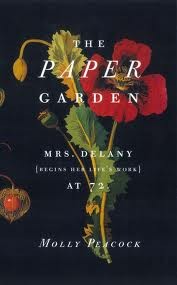 Mary Delany (1770-1788) was an English artist who made “paper-mosaicks,” intricate paper collages of flowers, that are now in the British Museum. Her great-great-great niece wrote about her method:
Mary Delany (1770-1788) was an English artist who made “paper-mosaicks,” intricate paper collages of flowers, that are now in the British Museum. Her great-great-great niece wrote about her method:
With the plant specimen set before her she cut minute particles of coloured paper to represent the petals, stamens, calyx, leaves, veins, stalk and other parts of the plant, and, using lighter and darker paper to form the shading, she stuck them on a black background. By placing one piece of paper upon another she sometimes built up several layers and in a complete picture there might be hundreds of pieces to form one plant. It is thought she first dissected each plant so that she might examine it carefully for accurate portrayal…
When my mother told me she was reading The Paper Garden, Molly Peacock’s book about Delany, I found some of the mosaicks online and was quite amazed—they look more like paintings than collages or paper cutouts. So I got the book from the library to find out more.
![]() First off, the book is beautifully produced. It’s approx. 8″ x 5″, narrower than most books, with a nice feel in the hands, and the pages are thick high quality stock. The page layout itself is very pleasing, with the page numbers in the wide outside margin about 2″ from the bottom of the page. The reproductions of Delany’s mosaicks are lovely. Clearly a lot of care was taken with the book design. I wish I could say as much for the writing. Delany’s life is compelling; she was an avid correspondent so there’s lots of information about her life, opinions and avocation. Peacock also sets the stage well, giving lots of details about 18th century life for the well-do-to in Britain. However she not only interjects her own story, comparing her life to Delany’s, but her use of 21st century slang seems out of place and jarring. I quickly figured out to skip the parts about the author and concentrate on Delany. It might be that the relative’s book quoted above (Mrs. Delany: Her Life and Flowers) would be a better read.
First off, the book is beautifully produced. It’s approx. 8″ x 5″, narrower than most books, with a nice feel in the hands, and the pages are thick high quality stock. The page layout itself is very pleasing, with the page numbers in the wide outside margin about 2″ from the bottom of the page. The reproductions of Delany’s mosaicks are lovely. Clearly a lot of care was taken with the book design. I wish I could say as much for the writing. Delany’s life is compelling; she was an avid correspondent so there’s lots of information about her life, opinions and avocation. Peacock also sets the stage well, giving lots of details about 18th century life for the well-do-to in Britain. However she not only interjects her own story, comparing her life to Delany’s, but her use of 21st century slang seems out of place and jarring. I quickly figured out to skip the parts about the author and concentrate on Delany. It might be that the relative’s book quoted above (Mrs. Delany: Her Life and Flowers) would be a better read.
![]() Below are several of Delany’s flower portraits.
Below are several of Delany’s flower portraits.
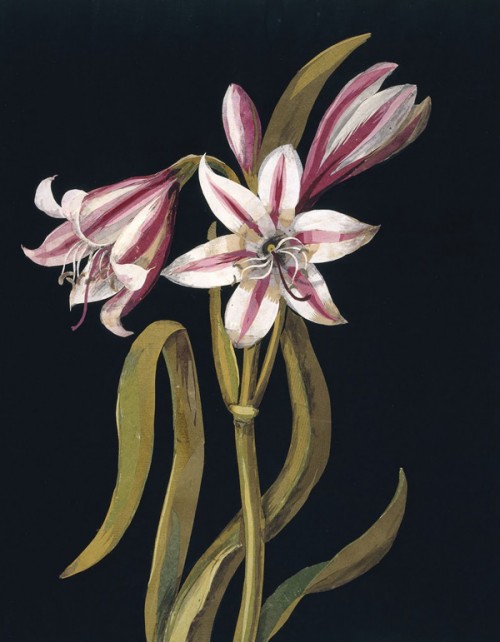
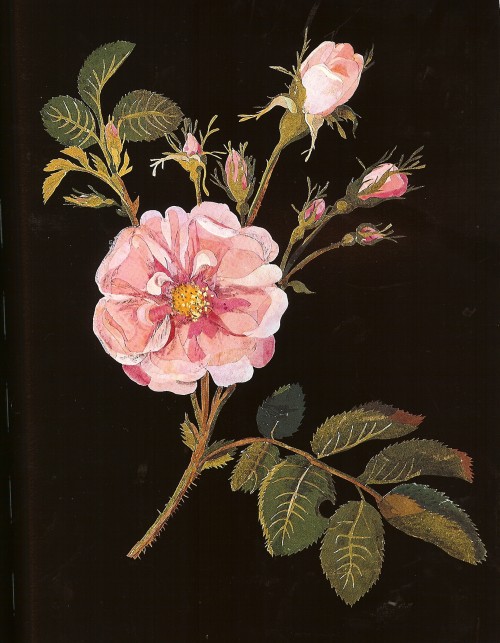
Ingeborg Vandamme incorporates pieces of text into a wearable art. They look like little secrets to wear close to your heart…
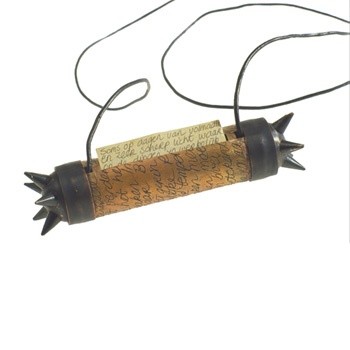
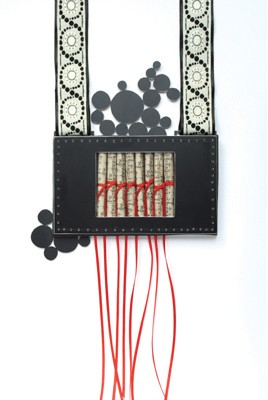
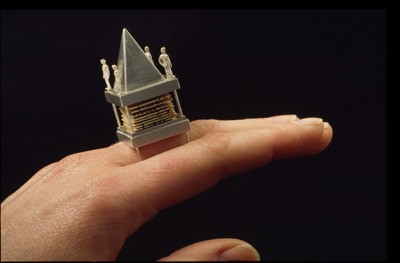
This book is from Lauren Lavender’s Interactive Paper Project. She’s got more books and interesting paper work here.
